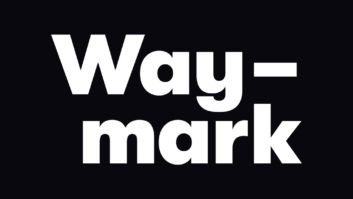
A consulting engineer wrote to me recently with some interesting ideas. He goes under name Fred Martins; for professional reasons he could not share his real name, but I think his comments worth sharing, as I have before with those of other crystal ball gazers.
While it may seem premature to muse about broadcasting’s next step — given the debt service that many stations face and the expensive digital transition TV recently made — it probably isn’t too soon to dream of what might be, he writes.
“There is a convergence of major forces: the need for redistributing spectrum, the maturing of efficient modulation technologies, devices that have become smaller and moved farther away from open air and move faster, and the plain truth that radio and TV reception in today’s buildings on today’s devices is not great. And there are minor needs and wants: consolidation of towers, convergence of media, localism and right-sizing the services so they are viable and sustainable.”
So Fred says: Let’s consider what might be.
Start here
“Let’s assume that there is some public good to be derived by having a healthy and diverse free broadcasting service where receivers work well in almost all of the places people can go, and in particular where they live. Let’s also assume that there is a public good in a ubiquitous wireless network access that also works well enough to support the things we do for work and play.”
“Refarming” spectrum, as opposed to reassigning it, it isn’t new, of course. Fred points out that a considerable re-farming of land mobile radio spectrum made way for cellular telephones. Refarming “beachfront” UHF spectrum similar to the cellular frequency reuse scheme would likewise be hugely efficient, he believes.
“Consider a four-cell scheme where every market has one-quarter of the current spectrum allocated to broadcast, and the other three-quarters goes to broadband. As you move from one market to another, which chunk or cell is used for broadcast and what others are available for broadband changes in the classic cellular reuse scheme, favoring the broadcast services first, and wireless broadband secondarily.
“Consider too that we consolidate those towers into one (and a disaster recovery spare), and deal with penetration issues; increase the power, change the modulation to a tiered scheme where small devices in rough places receive enough of a picture and sound, and big devices can go to HD and 3D levels with the less-robust enhancement bits.
“Distributed Antenna Systems (DAS) are needed to penetrate into the venues and transportation corridors broadcasters can’t now touch, and contiguous UHF spectrum makes this affordable. Boosters, on-frequency and/or using underutilized rural blocks all work in this world.”
Consider the numbers
Each market has 54 MHz for broadcast, Fred writes. They would also have 162 MHz in every urban center for wireless broadband.
“In some mostly rural areas between markets, broadcast overlap and broadcast boosters might take that down to 108 MHz or even 54 MHz. Collocated cellular architecture for broadcast has a lot of advantages. The FCC once asked to recover 120 MHz, so this is better as it yields an additional 42 MHz in the urban settings where it is most needed. It would be nice if there was a little set-aside for wireless microphones and unlicensed low-power links, and we save the radio astronomy band.” These are small problems that could be solved with the same refarming.
“The broadcast 54 MHz can be modulated in a number of ways, with a number of compression schemes, but let’s stay true to the broadcasting objective and make it very robust, but recognize that there is also some purpose in high-quality/high-bit-rate services,” Fred continues.
“Thus we do 1 bit/Hz kind of things mostly (payload, after heavy error correction) and we do mostly advanced codec kind of things with 300–500 kbps range for video; but some things not destined for the portable world are sent at much higher bit rates and lower robustness, preferably as an ‘enhancement’ signal.” Wire what sits still; use RF for what moves, he argues.
“Now, let’s bring into the multiplex all of the radio in a market — AM, FM and HD and all of the community outlets we can make good use of — and run them at about 50 kilobits per second.
“Why? Because we can also solve a lot of radio’s distribution issues as AM sinks in the noise, and FM gets blocked by buildings. Eventually, the old broadcast spectrum might find a better purpose, though garage door openers and Bluetooth probably aren’t it.”
This super-robust broadcast system can be configured as a market pleases, Fred believes. It would not be unreasonable to have 150 radio services and 40 SD TV services, all with maximum penetration to highly portable devices, and still have half the spectrum left for upping the basic bit rates or HD — or whatever.
“That ‘whatever’ surely means that the next generation of devices will support upgradable codecs, etc. ‘Whatever’ also means that broadcasters will still have some bandwidth for yet-unthought-of advanced services.”
Hard to face
As a broadcaster, Fred’s fundamental impulse is to save the spectrum for whatever we can come to do with it, because it is our future. “But I think I’ve been wrong,” he said. “What I need is bandwidth that is easily receivable (not ‘spectrum’ per se); our future might depend more on ubiquitous broadband and less on the spectrum we ‘control.’”
He also thinks broadcasters are no different from foresters or fishermen in that they can over-produce and fragment revenue streams to the point that, no matter how many operators they lay off or national automated services they create, they can’t make it pay the bills.
“I doubt anyone would disagree that even now there are allocations or stations that simply could never survive. It’s difficult to do good broadcasting when even the best have their audience and revenue severely diluted. Like forests and fish, it’s all in the balance between too much and not enough.
“A little scarcity can be a powerful good. My point is that 54 MHz might well be all broadcasters can reasonably support with ‘free’ programming, and that is the deal, after all: free spectrum (add a transmitter to get to cheap bandwidth) in return for free programs and some community service. After all, we want to preserve the broadcasting social contract.”
Paying for this are the broadband customers who will, over time through their service providers, pay for the new infrastructure and retiring or upgrading those flat screens.
“Of course, by time this happens, we’ll all want 3D, and 62-inch 4K screens will likely cost less than four tanks of gas. One has to consider where the puck will be in five years,” Fred writes.
“Instead of paying for transmitters, stations would pay for their portion of the bandwidth. It should be a wash if not a savings.
“The FCC might also see fit to turn some of this bandwidth over to communities and noncommercial and emergency signaling and communications. Public safety entities don’t need broadcasters in this model for emergency communications; all they need is bandwidth and support at the device level. Rather than underwrite noncommercial and educational stations, their support can be the gift of free transmission.
“At the same time, states and localities might be given more input on how the resource is used. If broadcasting is local, then why is the federal government the sole regulator/administrator?
“As a station, if you told me that for the next 10 years there would be no talk of spectrum fees; and I’m not expected to pay for the transition or even EAS; and I get fair price access to enough bandwidth to do adequately what I do now (or could do now); and all that was requested is that I be a broadcaster … I’d take that deal.”
Fred Martins knows this is a long shot, but he concludes that refarming the UHF “broadcast” band could make the business healthier, provide much better coverage, better serve community needs and wants, fix a bunch of annoying problems, future-proof the broadcast franchise and give society wireless broadband perfect for growing next-generation broadcasting.
“The absolutely most difficult thing for any business or organization or industry to do is to see technology and the market change, and follow it rather than fight it.”
Comment to [email protected].












